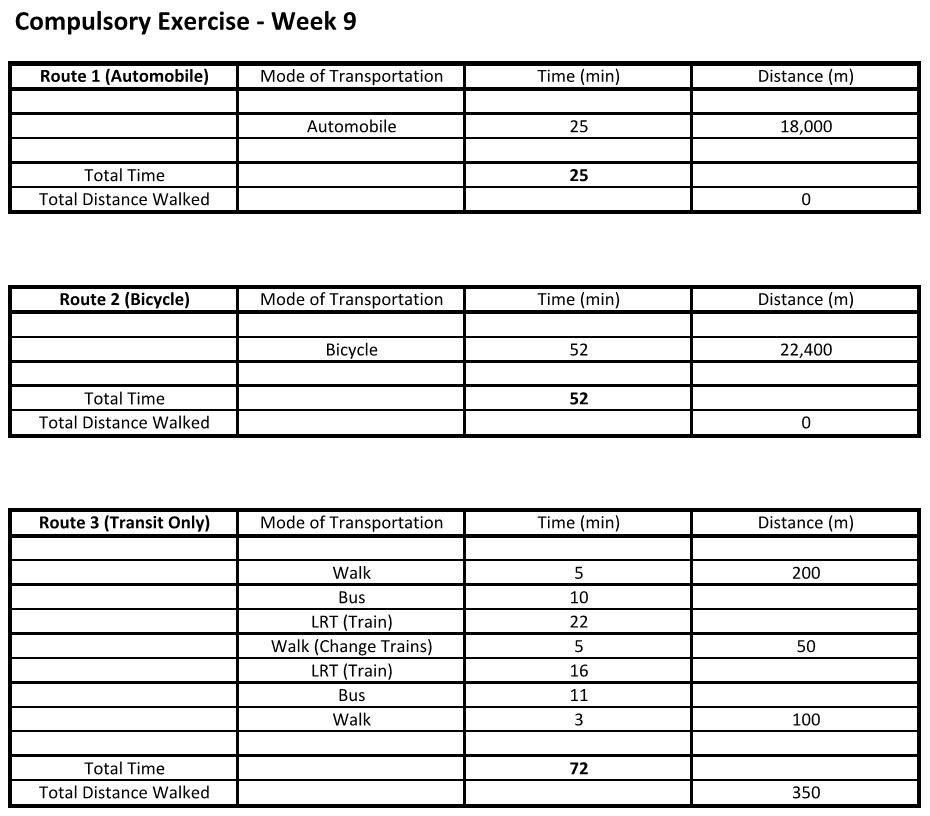Compulsory Exercise - Week 8. Mobility and Livability in Calgary.
FC-02x Livable Future Cities (1st Run) - Compulsory Exercise 5

Uploaded on 2015-11-24 by jhudyma
![Commuting Routes to Work.][1] ![][2] Here I will be examining three possible routes to go from my home to my office. Route 1: Car. This is the route most often taken. it is certainly the quickest and easiest, but easily the most stressful in terms of navigating through rush hour traffic. The weather also plays a large part in this, with the harsh Calgary winters often causing very poor driving conditions and winter commutes that have, in the past, taken in excess of 90 minutes. ![Typical automobile commute in downtown Calgary.][3] Route 2: Bicycle. This is only really an option from April to October, when the roads and pathways are clear of ice and snow. During the summer months, however, it is by far the preferred route for a number of reasons. Obviously, travel time is doubled from that of the car route; however, there are many factors that out weigh this convenience. Approximately 20 km of the route follows separated bike paths, often through parks, and keeps me completely separated from vehicular traffic. This, in itself, provides a very low stress environment, but also provides approximately two hours of exercise every day that I ride (round trip), is basically zero cost (aside from bicycle maintenance), and is emission-free. In terms of mental and physical well being, this route is very important to me. ![Cyclists along a popular bike path.][4] Route 3: Transit Only. Unfortunately, this is the route which takes the longest to get to work, coming in at around three times that of Route 1. As with the Route 1, this route is subject to some delays, especially in wintertime. Road conditions can elongate the bus links (thereby possibly missing connections) and accidents and breakdowns along the LRT (train) routes, though rare, have been known to wreak havoc on the transit system, with transit service along a route being shut down for an hour or more, depending on the disruption. Other factors which would make this route more attractive, if not for its overall length, would include a lower stress level due to not needing to do any driving, cheaper overall cost if a monthly transit pass were purchased and used pretty much every day, and the generation of a smaller carbon footprint. ![Train as it passes through downtown Calgary.][5] [1]: https://edxuploads.s3.amazonaws.com/1448337725707914.jpg [2]: https://edxuploads.s3.amazonaws.com/14483377852941464.jpg [3]: https://edxuploads.s3.amazonaws.com/14483378662593486.jpg [4]: https://edxuploads.s3.amazonaws.com/14483379619805716.jpg [5]: https://edxuploads.s3.amazonaws.com/14483380235008062.jpg